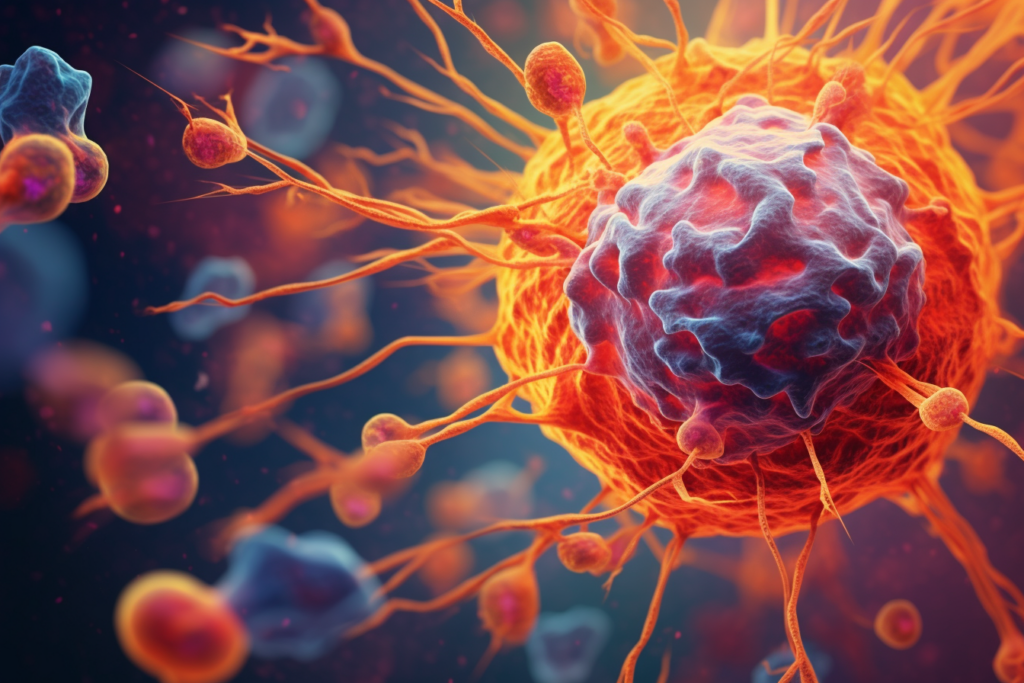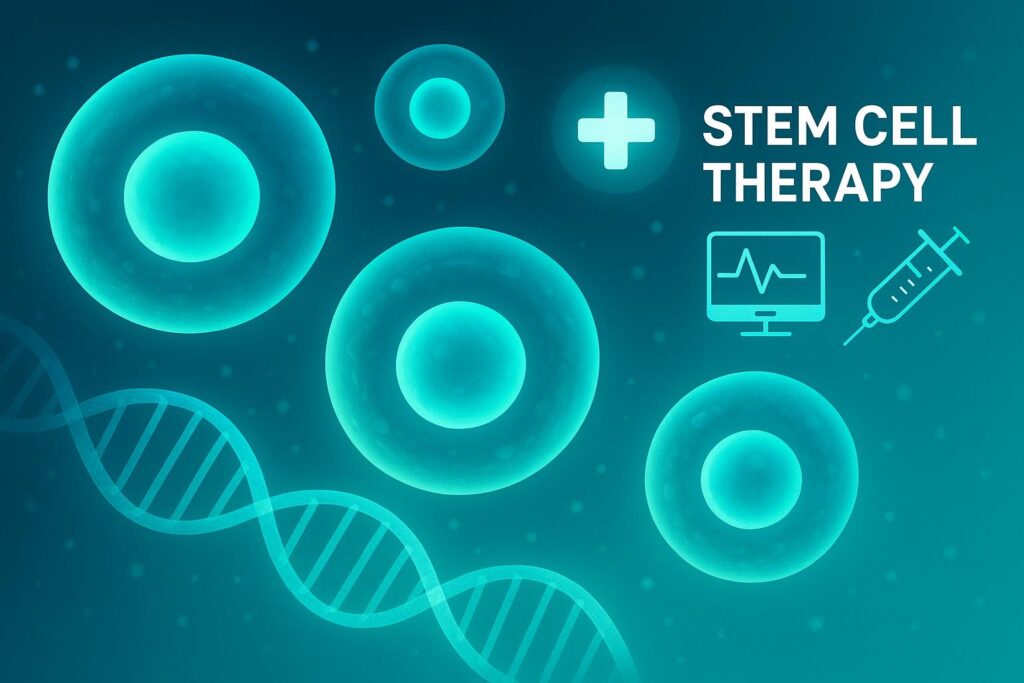Welcome, dear reader! It’s a pleasure to have you here as we embark on an enlightening journey into the world of stem cell transplants in oncology. This article is designed for those who are keen to learn more about cancer treatment options or are simply intrigued by the latest advancements in medical science.
Consider this analogy: In the world of construction, there are various tools, each with a specific purpose – a hammer for nails, a saw for cutting, a wrench for bolts. Now, imagine there was a magic tool that could transform into any tool needed at any given moment. That would be quite remarkable, wouldn’t it?
In the human body, stem cells serve a similar function. They are like the magic tool. They possess the unique ability to become any cell that the body needs. Whether it’s more blood cells or repairing damaged tissue, stem cells are the go-to resource.
Oncology, the study of cancer, is a field that affects millions of people worldwide. Traditional cancer treatments like chemotherapy and radiation therapy can be effective, but they often come with harsh side effects. This is where stem cell transplants come into the picture. They offer a beacon of hope in the fight against cancer, providing a new way to treat, and potentially even cure, this devastating disease.
In this article, we’ll delve into the world of stem cells and oncology. We’ll explore what stem cells are, how they’re connected to cancer, and how stem cell transplants can be used in cancer treatment. We’ll also discuss the benefits, risks, and future of stem cell transplants in oncology.
So, prepare for an exciting journey into the world of stem cell transplants in oncology. It promises to be a fascinating exploration!
Understanding Stem Cells
Welcome to the world of stem cells, the unsung heroes of our bodies! Stem cells are a bit like the all-rounders in a sports team – they have the unique ability to become any type of cell that our body needs. This remarkable feature is what makes them so crucial to our health and well-being.

Let’s start with the basics. Stem cells are special human cells that have the potential to develop into many different cell types, from muscle cells to brain cells. In some cases, they can also repair damaged tissues, making them a vital part of our body’s repair system.
There are three main types of stem cells: embryonic stem cells, adult stem cells, and induced pluripotent stem cells.
Embryonic stem cells
Embryonic stem cells come from human embryos that are three to five days old. They are pluripotent, which means they can divide into more stem cells or become any type of cell in the body. This versatility allows embryonic stem cells to be used to regenerate or repair diseased tissue and organs.
Adult stem cells
Adult stem cells, on the other hand, have a more limited repertoire. They are found in small quantities in most adult tissues, such as bone marrow or fat. Unlike embryonic stem cells, adult stem cells are multipotent, meaning they can only develop into a limited number of cell types. Their primary role is to maintain and repair the tissue in which they are found.
Induced pluripotent stem cells (iPSCs)
Lastly, we have induced pluripotent stem cells (iPSCs). These are adult cells that have been genetically reprogrammed to an embryonic stem cell-like state. This means that they can develop into almost any type of cell in the body.
Understanding stem cells and their potential uses is the first step in appreciating the role they can play in treating diseases, including cancer. As we move forward, we’ll delve deeper into how these incredible cells can be used in the field of oncology. So, stay tuned!
What is Oncology?
Now that we’ve got a handle on stem cells, let’s turn our attention to oncology. Oncology is a branch of medicine that specializes in the diagnosis, treatment, and prevention of cancer. The term “oncology” originates from the Greek word “onkos,” which means tumor or mass, and “logos,” which means study. So, in essence, oncology is the study of tumors or, more broadly, cancer.
Cancer is a group of diseases characterized by the uncontrolled growth and spread of abnormal cells. It can affect almost any part of the body, from the lungs and the brain to the skin and the bones. There are many types of cancer, including breast cancer, lung cancer, colon cancer, skin cancer, and prostate cancer, to name just a few.
The treatment of cancer can involve several different approaches, including surgery, radiation therapy, and chemotherapy. Each of these treatments has its own set of benefits and drawbacks, and the choice of treatment often depends on the type and stage of cancer, as well as the patient’s overall health.
One of the key aspects of oncology is the continual research into new and better ways to treat cancer. This is where stem cell transplants come in. As we’ll explore in the following sections, stem cell transplants offer a promising new approach to cancer treatment, one that could potentially revolutionize the field of oncology.
So, as we delve deeper into the world of oncology, keep in mind that it’s a field that’s continually evolving, with new treatments and technologies being developed all the time. It’s a testament to the incredible progress that’s being made in the fight against cancer.
Stem Cells and Oncology: The Connection
Stem cells and oncology are two fields that are intricately linked. In the context of cancer, stem cells play a dual role. On one hand, they contribute to the body’s ability to heal and regenerate, which can be beneficial in the recovery process after treatments like chemotherapy or radiation. On the other hand, certain types of stem cells, known as cancer stem cells (CSCs), can contribute to the development and progression of cancer.
Cancer stem cells are a subset of cells within tumors that possess characteristics associated with normal stem cells, specifically the ability to give rise to all cell types found in a particular cancer sample. CSCs are therefore tumorigenic (tumor-forming), perhaps forming tumors through the stem cell processes of self-renewal and differentiation into multiple cell types. Such cells are proposed to persist in tumors as a distinct population and cause relapse and metastasis by giving rise to new tumors12.
Research has shown that these cancer stem cells are often resistant to conventional cancer treatments, which can lead to cancer recurrence3. This has led scientists to explore new treatment strategies that specifically target cancer stem cells, with the goal of improving patient outcomes4.
Interestingly, induced pluripotent stem cells (iPSCs), which are adult cells that have been genetically reprogrammed to an embryonic stem cell-like state, are being used to study human cancer. These cells present a range of new opportunities for the study of human cancer, intersecting with other patient-derived models of cancer, such as organoids, organs-on-chips and patient-derived xenografts (PDXs)1.
In summary, the connection between stem cells and oncology is a complex one that offers both challenges and opportunities. By deepening our understanding of this connection, we can open up new avenues for cancer treatment and potentially improve outcomes for patients.
Footnotes
- Patient-derived induced pluripotent stem cells in cancer research and precision oncology ↩ ↩2
- Cancer stem cells in basic science and in translational oncology: can we translate into clinical application? ↩
- Basic oral care for hematology–oncology patients and hematopoietic stem cell transplantation recipients ↩
- Cancer stem cell impact on clinical oncology ↩
Stem Cell Transplants in Cancer Treatment
Stem cell transplants, also known as bone marrow transplants, are a significant part of the treatment landscape in oncology. They involve replacing bone marrow that has been destroyed by cancer or the treatment of cancer with healthy stem cells that can regenerate new bone marrow.
Stem cell transplants can be used to treat certain types of cancer, such as leukemia, myeloma, and lymphoma, as well as other blood and immune system diseases that affect the bone marrow. The replacement cells for the transplant can either come from the patient’s own body (autologous transplant) or from a donor (allogeneic transplant).
In an autologous transplant, stem cells are harvested from the patient’s own body before they undergo intensive chemotherapy or radiation therapy treatment. After the treatment, the stem cells are returned to the patient’s body, restoring their immune system and their body’s ability to produce blood cells and fight infection.
In an allogeneic transplant, stem cells come from a donor whose blood proteins, called human leukocyte antigens (HLA), closely match the patient’s. The donor’s stem cells are given to the patient after the patient has undergone chemotherapy and/or radiation therapy. This type of transplant can sometimes result in a “graft-versus-cancer cell effect,” where the new stem cells recognize and destroy cancer cells that are still in the body.
There are also other types of transplants, such as umbilical cord blood transplants and haplotype mismatched transplants, which can be used if a perfect donor match cannot be found.
The transplant process involves several steps, including collecting the stem cells, preparing the patient’s body for the transplant, the actual transplant day, and then the recovery period. Recovery from a stem cell transplant takes a long time and involves close monitoring by the healthcare team to manage any side effects and to watch for signs of infection.
Stem cell transplants are a complex medical procedure and require a significant commitment of time and resources from both the patient and their healthcare team. However, they offer a potentially life-saving treatment option for patients with certain types of cancer.
Benefits of Stem Cell Transplants in Oncology
Stem cell transplants in oncology come with a host of benefits that make them a valuable tool in the fight against cancer. Here are some of the key benefits:
- Potential for Cure or Remission: For some types of cancer, stem cell transplants can lead to a cure, or at least a remission, meaning the cancer is under control and the patient can return to normal life activities.
- Restoration of Bone Marrow: Stem cell transplants can help restore bone marrow function after high-dose chemotherapy or radiation therapy. This is crucial as these treatments can damage the bone marrow, impairing its ability to produce new blood cells.
- Immune System Reboot: In allogeneic transplants, the new stem cells can create a new immune system that may help kill off any remaining cancer cells. This is known as the “graft-versus-cancer” effect.
- Treatment for Relapsed Cancer: Stem cell transplants can be an effective treatment for cancers that have come back after treatment.
- Enables High-Dose Treatments: Stem cell transplants allow doctors to use higher doses of chemotherapy or radiation therapy than would normally be tolerated. The stem cells help the body recover from these high-dose treatments.
- Potential for Fewer Long-Term Side Effects: Compared to long-term chemotherapy or radiation therapy, stem cell transplants may result in fewer long-term side effects.
While stem cell transplants offer many benefits, they are not without risks and challenges. It’s important for patients to discuss these potential risks and benefits with their healthcare team to make an informed decision about their treatment options.
Risks and Challenges of Stem Cell Transplants
While stem cell transplants can be a life-saving procedure, they also come with potential risks and challenges. These risks can vary greatly from person to person, depending on factors such as the type of transplant, the specific disease being treated, the patient’s overall health, and their age. Here are some of the potential risks and challenges associated with stem cell transplants:
- Graft-Versus-Host Disease (GVHD): This is a condition that can occur after an allogeneic transplant, where the donated stem cells view the recipient’s body as foreign and start attacking the body’s tissues and organs. GVHD can be acute (developing within the first few months after the transplant) or chronic (developing later and lasting longer).
- Stem Cell (Graft) Failure: This is a rare but serious complication where the body rejects the new stem cells. This can lead to serious complications and may require additional treatment or another transplant.
- Organ Damage: High-dose treatments used before a transplant can cause damage to organs such as the heart, liver, and lungs.
- Infections: Patients are at an increased risk of infections after a transplant due to a weakened immune system.
- Cataracts: Cataracts can develop as a side effect of the radiation or certain types of chemotherapy used during the conditioning process.
- Infertility: Some treatments used in stem cell transplants can cause infertility. If this is a concern, patients should discuss fertility preservation options with their healthcare provider before the transplant.
- New Cancers: There is a small risk of developing a new form of cancer after a stem cell transplant. Regular follow-ups and screenings are important for early detection and treatment.
- Death: In some cases, complications from a stem cell transplant can be life-threatening.
It’s important to note that not everyone will experience these risks and challenges, and some people may experience others not listed here. The healthcare team will closely monitor the patient to manage any complications that arise and will work to mitigate risks as much as possible. It’s crucial for patients to discuss these potential risks and challenges with their healthcare team to make an informed decision about their treatment options.
The Future of Stem Cell Transplants in Oncology
The future of stem cell transplants in oncology is promising and continues to evolve rapidly. Here are some of the key areas of focus and potential developments:
- Improved Risk Stratification and Management: Future guidelines for the management of patients undergoing stem cell transplants are expected to refine risk stratification, particularly for invasive fungal disease, and improve the management of complications such as fever and neutropenia1.
- Targeting Cancer Stem Cells: Research is ongoing to better understand and target cancer stem cells, which are thought to drive tumor initiation and recurrence. For example, studies have identified CD24 as a functional liver tumor-initiating cell marker that drives tumor initiation through STAT3-mediated NANOG regulation2. This could potentially lead to new therapeutic targets.
- Addressing Long-Term Complications: As survival rates improve, there is increasing focus on managing the long-term complications of stem cell transplants. These can include endocrinopathies, musculoskeletal disorders, cardiopulmonary compromise, and subsequent malignancies3. Future research will likely focus on strategies to prevent or manage these complications.
- Advances in Transplant Techniques: Advances in transplantation techniques and supportive care strategies are expected to continue, leading to improved survival and quality of life for patients undergoing stem cell transplants4.
- Stem Cell Studies for CNS Repair: There is growing interest in the potential use of stem cells for the repair of the central nervous system (CNS). Current phase I/II trials using stem cells in the CNS are pioneering the stem cell therapy process and could potentially lead to new treatments for CNS diseases and injuries5.
While these developments are exciting, it’s important to note that they are based on current research and trends, and the future of stem cell transplants in oncology will ultimately be shaped by ongoing research and clinical trials.
Footnotes
- Guideline for the Management of Fever and Neutropenia in Children With Cancer and Hematopoietic Stem-Cell Transplantation Recipients: 2017 Update ↩
- CD24+ Liver Tumor-Initiating Cells Drive Self-Renewal and Tumor Initiation through STAT3-Mediated NANOG Regulation ↩
- Long-term health impacts of hematopoietic stem cell transplantation inform recommendations for follow-up ↩
- Diagnosis and treatment of primary CNS lymphoma in immunocompetent patients: guidelines from the European Association for Neuro-Oncology ↩
- Translating Stem Cell Studies to the Clinic for CNS Repair: Current State of the Art and the Need for a Rosetta Stone ↩
Conclusion
As we conclude our journey into the world of stem cell transplants in oncology, it’s clear that this field is a beacon of hope in the fight against cancer. Stem cells, with their unique ability to regenerate and repair, offer a new approach to cancer treatment that could potentially revolutionize oncology.
We’ve explored the nature of stem cells, their connection to oncology, and how they’re used in cancer treatment. We’ve also delved into the benefits, risks, and future of stem cell transplants in oncology. While stem cell transplants offer many benefits, they also come with potential risks and challenges. It’s crucial for patients to discuss these with their healthcare team to make an informed decision about their treatment options.
The future of stem cell transplants in oncology is promising, with ongoing research and clinical trials paving the way for improved risk stratification, better management of long-term complications, advances in transplant techniques, and new treatments for CNS diseases and injuries.
As we look to the future, it’s clear that stem cell transplants will continue to play a vital role in oncology. The continued research and development in this field are testament to the incredible progress being made in the fight against cancer. It’s an exciting time in the world of oncology, and we look forward to seeing what the future holds.
Thank you for joining us on this journey. We hope this article has provided you with a deeper understanding of stem cell transplants in oncology and their potential to change the face of cancer treatment.



